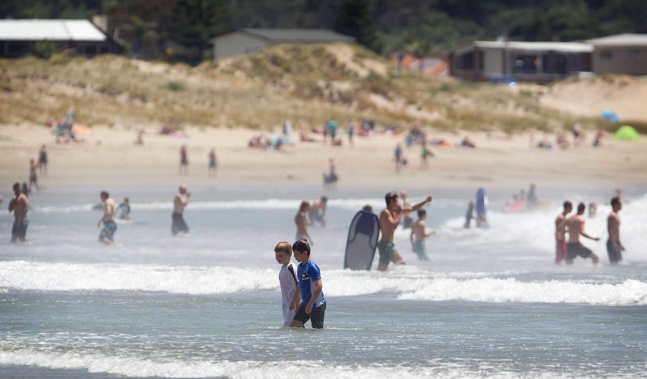
It’s shaping up to be a hot and wet summer with this year’s El Nino bringing humidity and heat in equal measure.
The latest Niwa Weather outlook said there is a 100 per cent chance El Nino will carry on through to March - and there’s a higher chance of heavy rain as summer draws on because of it.
This year El Nino has brought what feels like a late start to summer for much of the country, but Niwa says January through into March will see higher temperatures than usual, a more variable rainfall pattern across the country, and localised marine heatwaves in part of the south and north islands.
As of early January, localised heatwaves were already being recorded in coastal Canterbury, Hawke’s Bay, Gisborne, Bay of Plenty, and Auckland.
While the ocean may be warm for those summer swims, it could also mean the heat and humidity of the air is increased, bringing about more rain.
/cloudfront-ap-southeast-2.images.arcpublishing.com/nzme/CSA7U3JSX5GI5EBWZQGAWDPKLM.jpg) Rain rolls in at Auckland's Piha Beach on New Year's Eve 2023. Photo / Alex Burton
Rain rolls in at Auckland's Piha Beach on New Year's Eve 2023. Photo / Alex Burton
As January continues there’s a high chance temperatures in the North Island will be above average with Auckland, Waikato and the Bay of Plenty forecast to see extreme humidity with the heat.
Rainfall in these areas will likely be around average, but spells of heavy rain could sweep the regions in late January.
Moving into February and March, Niwa predicts there will be long periods of dry, hot weather and soil and river conditions will be near normal.
Further south in Taranaki, Wellington and Manawatu conditions will be drier and temperatures are very likely to be above average through January. Much like the upper North Island, some rain spells could occur in late January but these are not expected to bring the soil moisture levels to above-average.
With the hot dry weather, winds are forecast to be stronger than usual throughout summer.
In the South Island around the Tasman and Marlborough regions, Niwa says people can expect extreme humidity to descend in mid-January and last about a week, with temperatures soaring above average and stronger winds than usual for this time of year.
As the year continues, Niwa predicts there is an 85 per cent chance El Nino will continue into autumn before finally dissipating sometime near winter.
Take your Radio, Podcasts and Music with you









